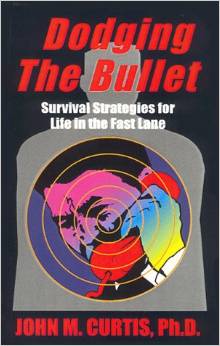Since the Oct. 16 beheading of French public school teacher Samuel Pady by 18-year-old Chechen-immigrant Abdullah Anzorov, it underscores the dangers of forced immigration to France and other parts of Europe. Whatever problems exist in France or other EU states today with Islamic immigration, you can blame it squarely on the EU backing the nine-year-old Syrian War that killed more that 500,000 and displace 15 million Syrians in the worst refugee crisis since WW II. EU officials led by German Chancellor Angela Merkel and French President Emmanuel Marcon backed the Saudi proxy war in Syria to topple Syrian President Bashar al-Assad. Former U.S. President Barack Obama and his 77-year-old Vice President Joe Biden wholeheartedly backed the Saudi proxy war against al-Assad, spending billions supporting various Syrian rebel groups under Syrian Democratic Forces.
Beheading a French teacher was a gruesome reminder that home-grown terrorism has been increased by the EU’s pressure policies requiring EU states to take their quota of Mideast immigrants due to the 11-year proxy war backed by Brussels. Forced Islamic immgration came back to haunt France Nov. 13, 2015 when Islamic terrorists massacred concert-goers at the Bataclan Theatre and other Paris locations, killing 137 French citizens, injuring 413, raising awareness in France about the dangers of Islamic immigration to EU countries with secular states, largely Roman Catholic, Eastern Orthodox and other Christian faiths. No one in France knew after the horrific Jan. 7, 2015 Islamic attack on Charlie Hebdo satirical magazine killing 12, injuring 11, that it was an omen of things to come. All three Islamic attacks, including the grisly beheading Oct. 16, involved Islamic radicals.
Even after the horrific Bataclan massacre in 2015, no one imagined the grisly truck ramming in Nice, France July 14, 2016 by Tunisian radical Mohammed Lahouaiej Bouhiel, more Islamic State [IS]-backed lone-wolf attacks at EU targets. By the time the Nice car ramming attack took place, U.K. citizens voted June 23, 2016 to end participation in the EU, largely due to mounting problems from Islamic immigration into Europe. There’s no question that a series of horrific Islamic attacks in France and some in the U.K. drove British citizens to vote [52%-48%] to leave the EU. Merkel and Macron kept backing the Saudi-backed Syrian proxy war to drive al-Assad out of Damascus. Brussels’ own policies created its own problems, driving the U.K. out of the EU and practically breaking the European Union. Countries like Hungary, Czech Republic and Poland almost split from Brussels.
Today mass demonstrations all over France for intellectual freedom over terrorist tyranny doesn’t begin to deal with the social dislocation produced by the EU’s immigration policies, but, more importantly, Merkel and Macron’s support of the Saudi proxy war that made a bad situation worse in France. France, with its colonial history in North Africa, has always had immigration from Islamic cultures. That’s not where the problem started Most of that immigration over the last 100 years produced a great depth and texture to French society, especially in Paris where Tunisians, Moroccans, Libyans and Algerians provided added cultural richness to French society. Today’s brand of Islamic radicals stem from failed states in the Middle East where radical Islamic leaders over the last 40 years created new conflicts with a Wahhabi-brand of Islam emerging from Saudi Arabia.
Reacting to the latest atrocity at the hands of one Chechen Islamic radical, French people of all ethnicities want to guarantee protection of the French educational system. “You do not scare us. We are not afraid. You will not divide us. Were are France!” tweeted Prime Minister Jean Castex who gathered at the Place de la Republique. Rumors that the Anzorov objected to public school teacher Samuel Pady showing pictures of the prophet Mohammed in his daughter’s classroom prompted the attack. While that might of precipitate the attack, Islamic immigrants living in the French suburbs North of Paris periodically riot for one thing or another. Abdullah’s attack was reminiscent of the Chechen-born Tsarnaev brothers, Dzhokhar and Tamerlan, who detonated bombs at the finish line of the Boston Marathon April 13, 2013, killing three, injuring 264, in another ISIS-inspired, lone-wolf-type terrorist attack.
If there’s any silver lining to the grisly Paris beheading, it’s that it’s not a widespread problem but more confined to sick individuals, not part of a wider conspiracy. “The entire educational community is affected, and beyond it society as a whole,” said French Teachers Union spokesman Bernard Deswarte aid in Toulouse gathering in a crowd of about 5,000. “Everyone is in danger today,” said 18-year-old student Valentine Mule, attending a Nice rally. But unlike more spectacular mass attacks like the 2015 Bataclan Theatre, there’s no evidence that more organized Islamic terror attacks are occurring in France over the last five years. While the beheading of public school teacher Samuel Pady is tragic, it doesn’t reflect a growing trend in France or other Western countries. Once the U.S. took out Islamic State leader Abu Bakr al-Baghdadi in Syria Oct. 27, 2019, terror attacks have diminished.



